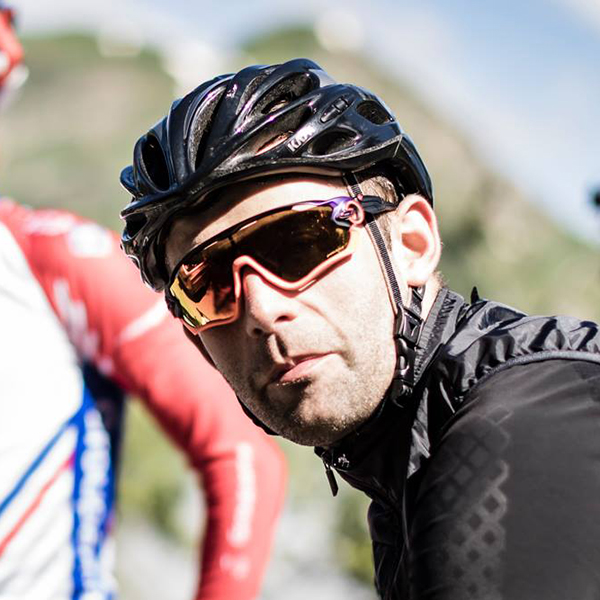The rebooted-for-2024 Look Keo Blade pedal has arrived, with claims of aero improvements, reduced hotspots, an improved clipping action and better durability.
As an experienced Keo Blade user, I’ve been testing the Keo Blade Ceramic version – a direct replacement for the old Keo Blade Carbon Ceramic pedal in the updated (and rationalised) three-pedal offering.
Overall, I’ve been impressed and am convinced the latest Keo Blade design marks a small improvement over the old one.
When the time comes, the new pedals will represent a small upgrade to those who wear out their old Keo Blades, but whether or not you'll notice all the claimed improvements is open to debate.
Look Keo Blade Ceramic details and specifications
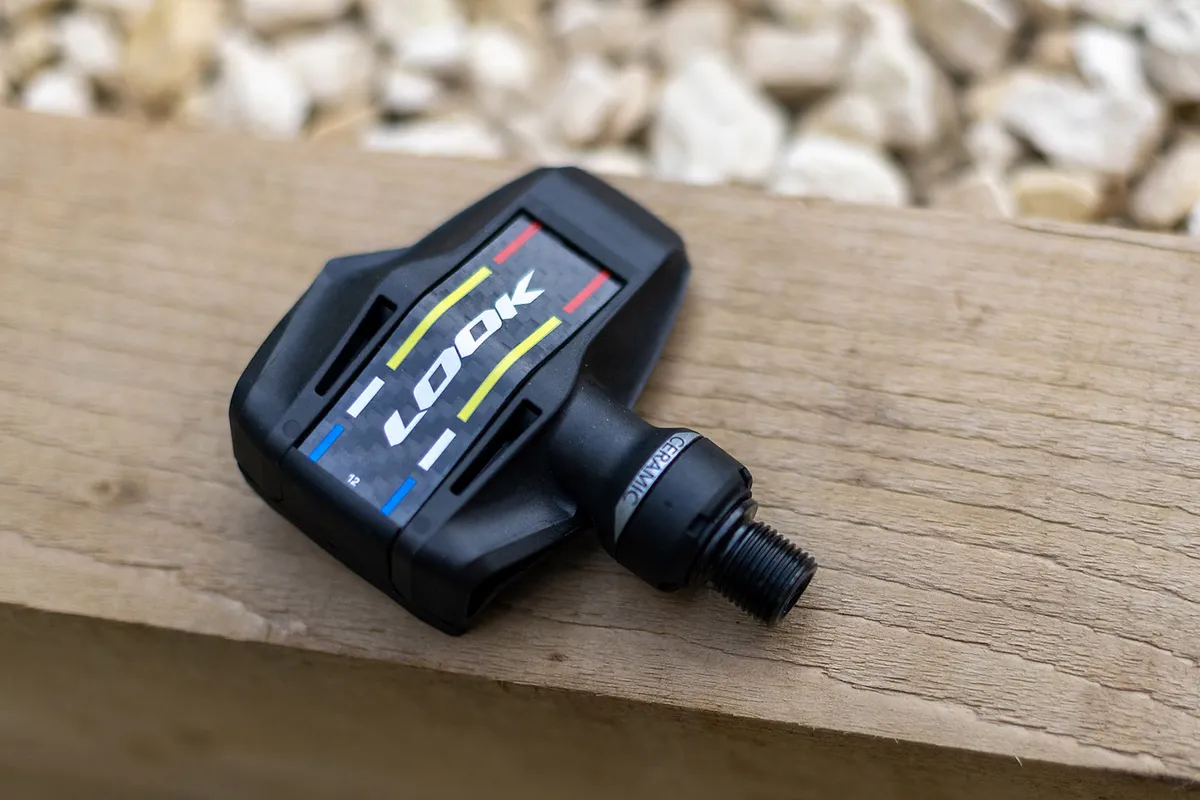
The latest Look Keo Blade pedal sees an updated design, accompanied by a broad spectrum of improvements.
Look says the frontal area has been slimmed and reprofiled, which it says confers a two per cent reduction in aerodynamic drag (albeit, it doesn’t specify at what speed, or whether that accounts for a clipped-in shoe).
The stainless steel contact plate has also been updated, with a slightly broader shape more akin to Shimano’s higher-end SPD-SL pedals. This is said to mitigate against hotspots.
The Q-factor remains unchanged at 53mm, as does the stack height at 14.8mm (8.5mm from the pedal, 6.3mm from the also-unchanged Keo cleats).
In comparison, Shimano’s Dura-Ace PD-R9100 pedals offer a 52mm Q-factor (with the option of a 4mm extended axle, for those who prefer a wider stance width) and a stack height of 14.6mm.
Look claims it has addressed the pedal’s weight distribution, and how the pedal hangs when not in use, in an effort to make clipping in and out easier and more secure than before.
The French brand also says it has improved the pedal’s durability.
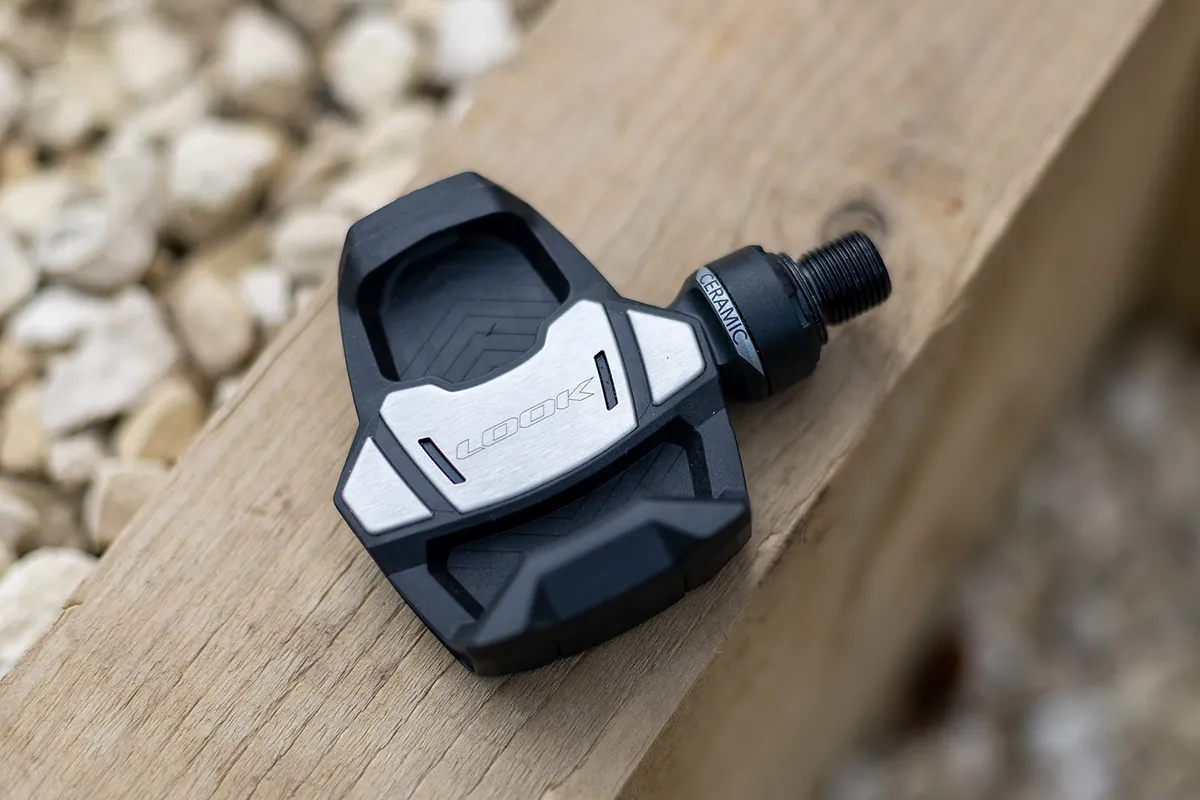
The aforementioned steel plate update, plus a “strengthened” pedal body, is claimed to bring three times the robustness and impact resistance of the old design.
Unless you happen to be prone to striking Keo Blade pedals, most may notice the changes to the retention lever shape more – Look says this should extend cleat life (a known bugbear for Keo cleat users, including myself), while it’s possible it could hold the cleat more firmly in place too.
Look has also tweaked the spindle design, with dual-sealed bearings (ceramic in this case), all lubricated and protected by a “reformulated” factory grease.
Our news story covers the new range in full, but the Keo Blade Ceramic pedal sits in the middle of three, which now all feature carbon bodies.
Thus, the word ‘carbon’ has been dropped from its nomenclature, presumably because it’s no longer needed to differentiate the models.
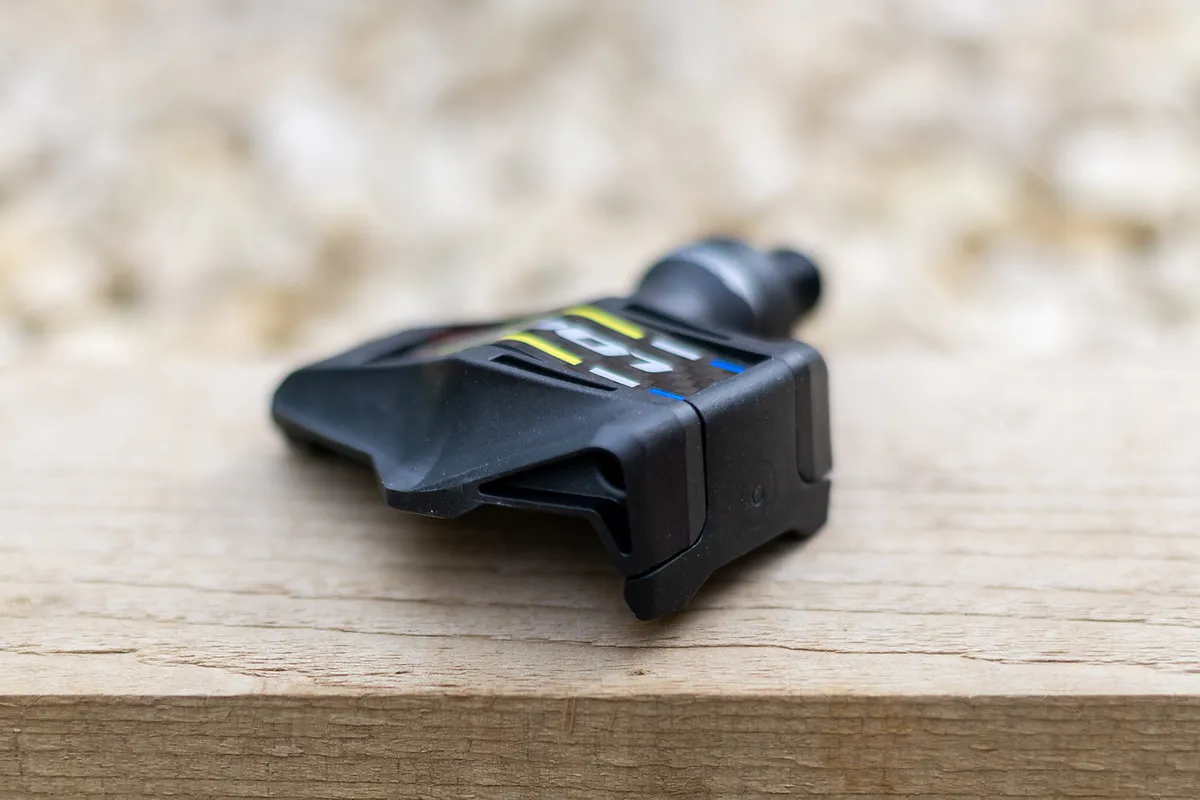
It comes with 12Nm ‘blades’ fitted as standard, although Look no longer supplies the stiffer 16Nm replacements (which make it harder to clip in and out) in the box. These can still be replaced, but you’ll need to purchase them separately.
In a welcome bonus, though, Look now supplies its grey Keo Grip cleat variant (with 4.5 degrees of float), as opposed to its standard non-grip version.
This has been a rolling change to Look’s pedals in recent years (the last set I bought had the non-grip cleats in, though, perhaps from an older batch), but should be a guarantee with the new pedals.
Despite the changes to the pedal body, the shape of the cleats remains unchanged, and versions with zero (black) and nine degrees of float (red) also remain available.
While I’ve found Look’s Keo Grip cleats’ lifespan to be limited versus Shimano and Time systems, they do at least offer a little more grip on café floors versus the non-grip variety.
The Look Keo Blade Ceramic pedals cost £199.99 / €210 / $252 a set. This remains more or less identical to the outgoing version, although the US has recently seen the old model priced at $189.
This compares favourably to a Shimano Dura-Ace PD-R9100 pedal set at £234.99 / €284.95 / $280, which features a stainless steel spindle versus the chromoly alloy one fitted here.
My test set weighed in at 232g, 4g more than Shimano’s claimed weight for its Dura-Ace pedals.
Look Keo Blade Ceramic performance
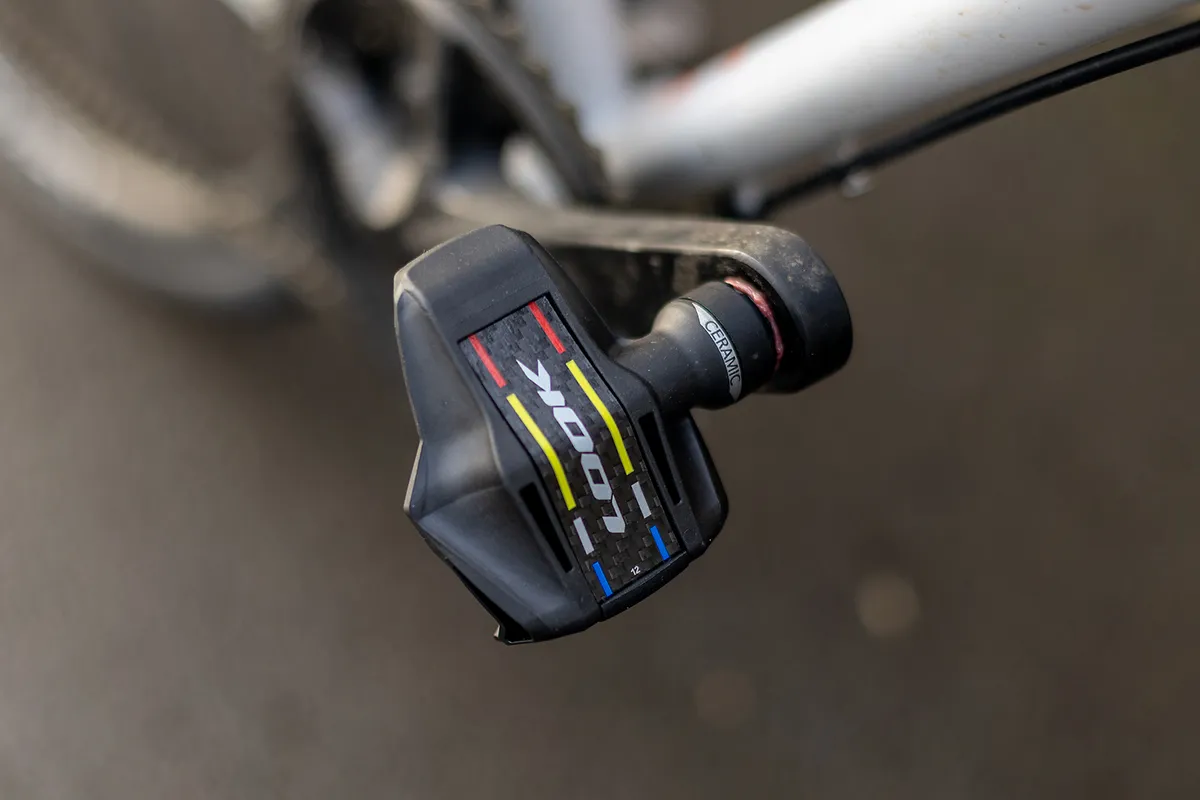
I tested the Look Keo Blade Ceramic pedals complete with a 2mm washer installed on either side, pushing out the effective Q-factor to 55mm.
This mirrored my prior (bike-fit decreed) setup with my old Keo pedals, as well as when running my Garmin Vector 3 power meter pedals.
The tiniest gains almost no-one will notice
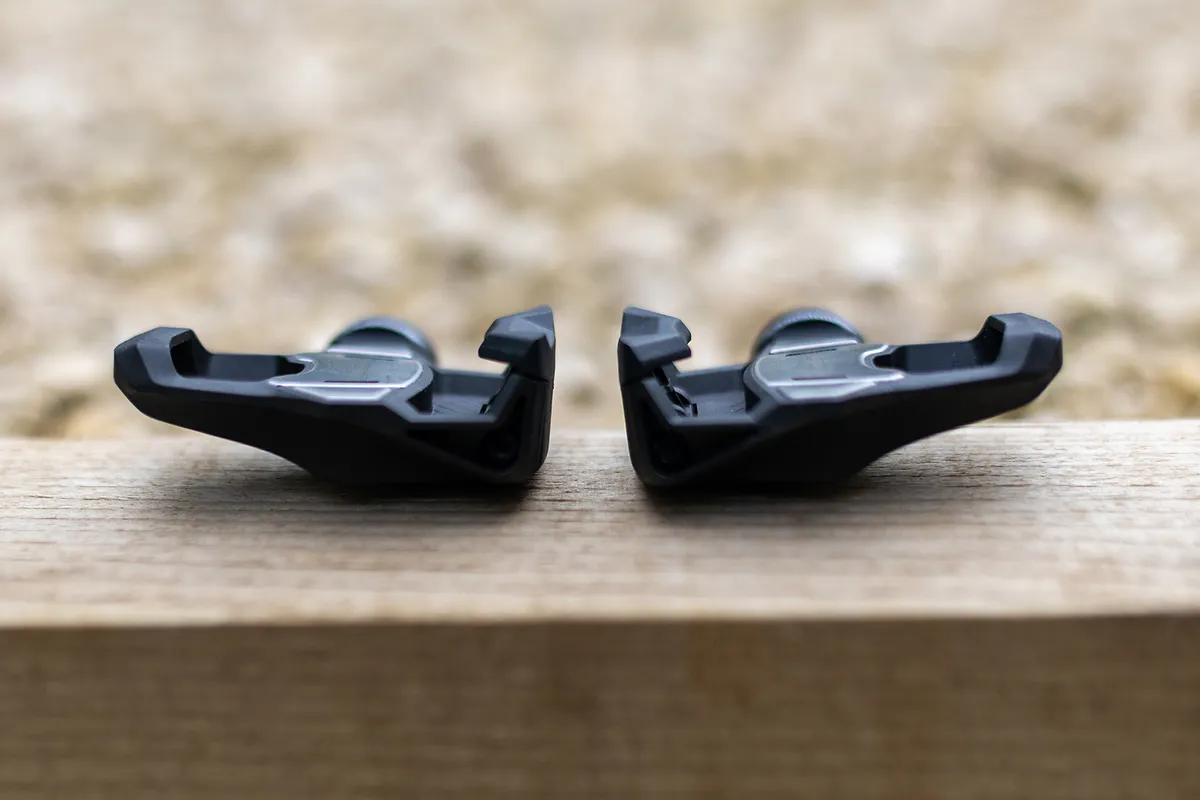
In all, it’s nigh-impossible to tell any difference between these and my old Keo Blade Carbon Ceramic pedals when clipped in and pedalling.
Look has always stood by the claim that its pedals offer the “best power-to-weight ratio” around, but essentially, this boils down to offering up the largest contact patch to the cleat for the size of the pedal.
Whether it does offer improved power transfer is up for debate, but I can’t detect a difference between the old 700mm2 surface area and this new 705mm2 design when riding.
However, the cleat and pedal interface certainly feels notably solid and ‘connected’ beneath both of my pairs of road shoes (which each have stiff carbon soles).
While there’s 4.5 degrees of float in the supplied cleats, I never felt any risk of pulling or slipping out under load.
The small aero improvements are also likely to appeal in a world where every little advantage might matter, but for me, they were unnoticeable.
Perhaps the biggest upside I could feel was the tiny psychological boost of knowing I might be more efficient, but the same could be said of a placebo.
That’s not to say the gain doesn’t exist, of course, simply that if it does, it’s too small to notice while riding.
Improved clipping in and out
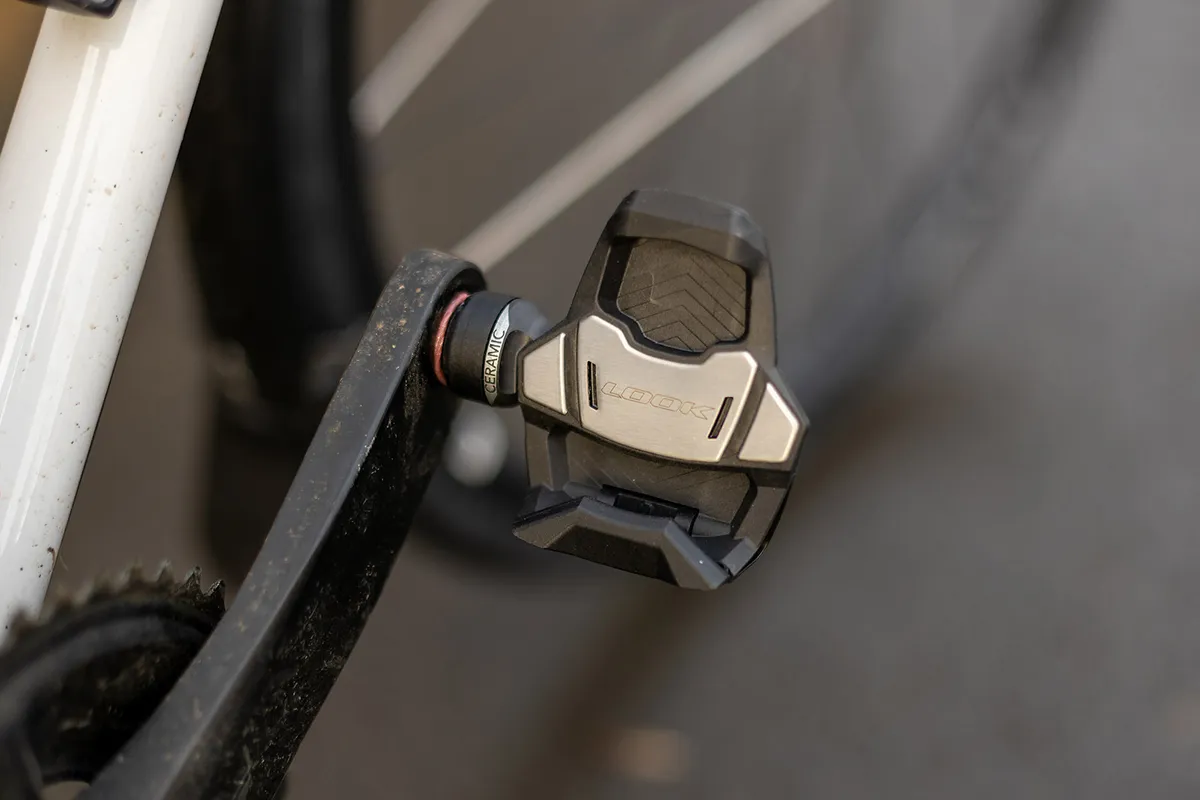
The experience of clipping in and out has become more defined, and the experience of using the pedals has improved as a result.
This sensation depends to a large degree on any wear in the pedal mechanism or cleat, as well as the blades you have installed.
But, compared to my old Keo Blade Carbon Ceramic pedals (which have 12Nm blades installed and can’t reasonably be described as ‘worn’), the new pedals feel crisper when ‘clicking’ down.
I found, as long as I wasn’t lazily trying to ease my foot in, but was clipping in with confidence and a degree of force, the mechanism was reassuringly firm.
I also found I couldn’t take liberties and imprecisely ‘mash’ my foot in by force – something that was, if not easy, then more possible on the old model.
On this basis, foot mashers may find the new Keo Blade Ceramic a little harder to use than the previous equivalent model. But for everyone else, it should mark a small improvement.
Twisting the cleat out takes a concerted effort compared to lower-tension setups, but that was also true of the old design.
The pedals also seem to hang in a more consistent manner, the rear body hanging down to present the top of the pedal to your foot.
It’s worth noting that I’ve always found Keo Blade pedals to be a little better at this compared to the more ‘free-spirited’ Keo pedals (these you can easily kick into a wild spin by accident when under pressure to clip in quickly). However, here the occasional tendency for the blade side of the pedal to rest on top seems to have been removed.
Leaving my ego at the door, the 12Nm tension blade is probably overkill. As I have been in the past, and like most riders, I would probably be satisfied with the less stiff 8Nm unit you get with the base Keo Blade pedal.
What about durability?
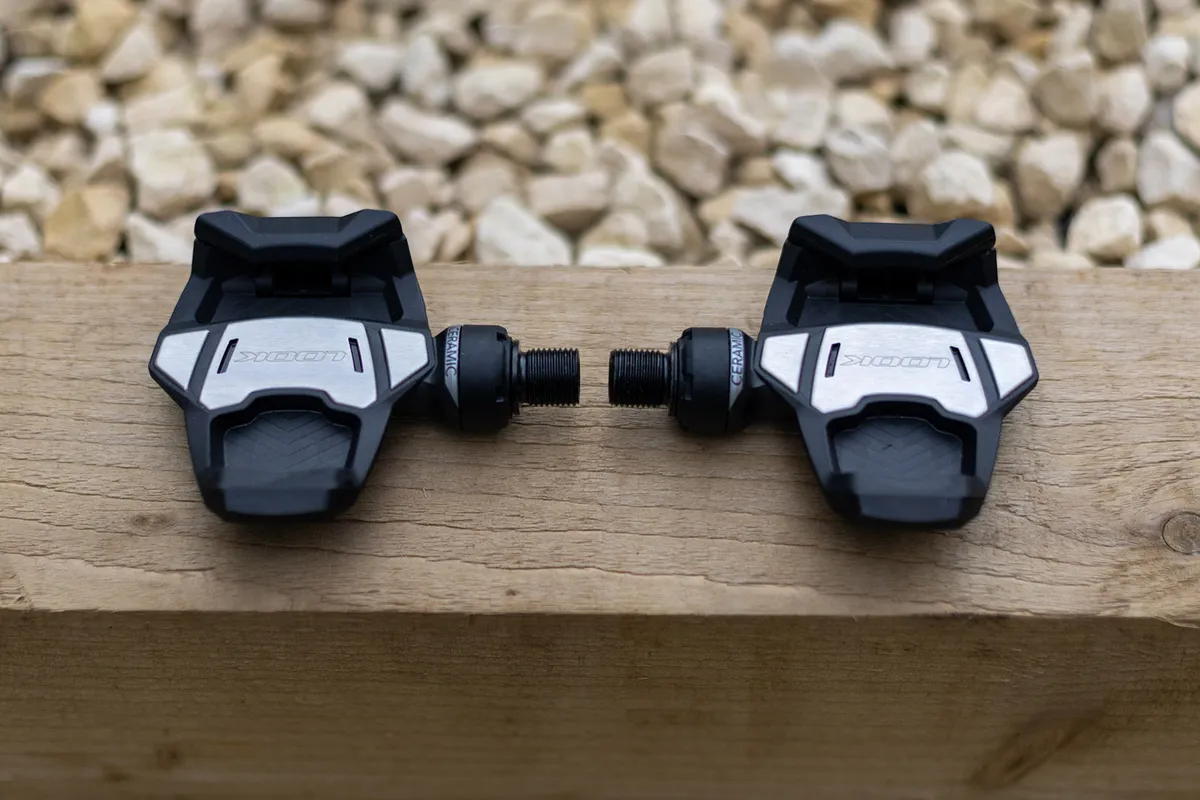
Testing durability and wear life is impossible in the scope of a single review, although I have ridden the pedals exclusively for a month through the wettest UK winter conditions.
The pedals were submerged on a few occasions as I pedalled through long flooded sections of road.
I can’t detect any negative change in the smoothness of the bearings from new (in fact, they feel slightly freer now, as one might expect) and there was no play in the spindle.
The seals, therefore, appear to be intact and doing their job, although if you want to inspect or maintain your own pedals, you’ll need a Look Pedal Key, which sells for around £30.
Ceramic bearings are often touted as offering lower friction and better durability than stainless steel bearings. Studies have shown there could be small gains to be had in terms of efficiency, but, similar to the touted aero claim and slightly broadened plate, I can’t feel the difference on the road.
That said, I didn’t have a steel-bearing set to compare them against, and I’m not a professional rider or amateur racer seeking every small gain. Those who are may, understandably, feel differently.
I will be continuing to use the Keo Blade Ceramic pedals for the foreseeable future, and will update this review should any notable issues arise.
Look Keo Blade Ceramic bottom line
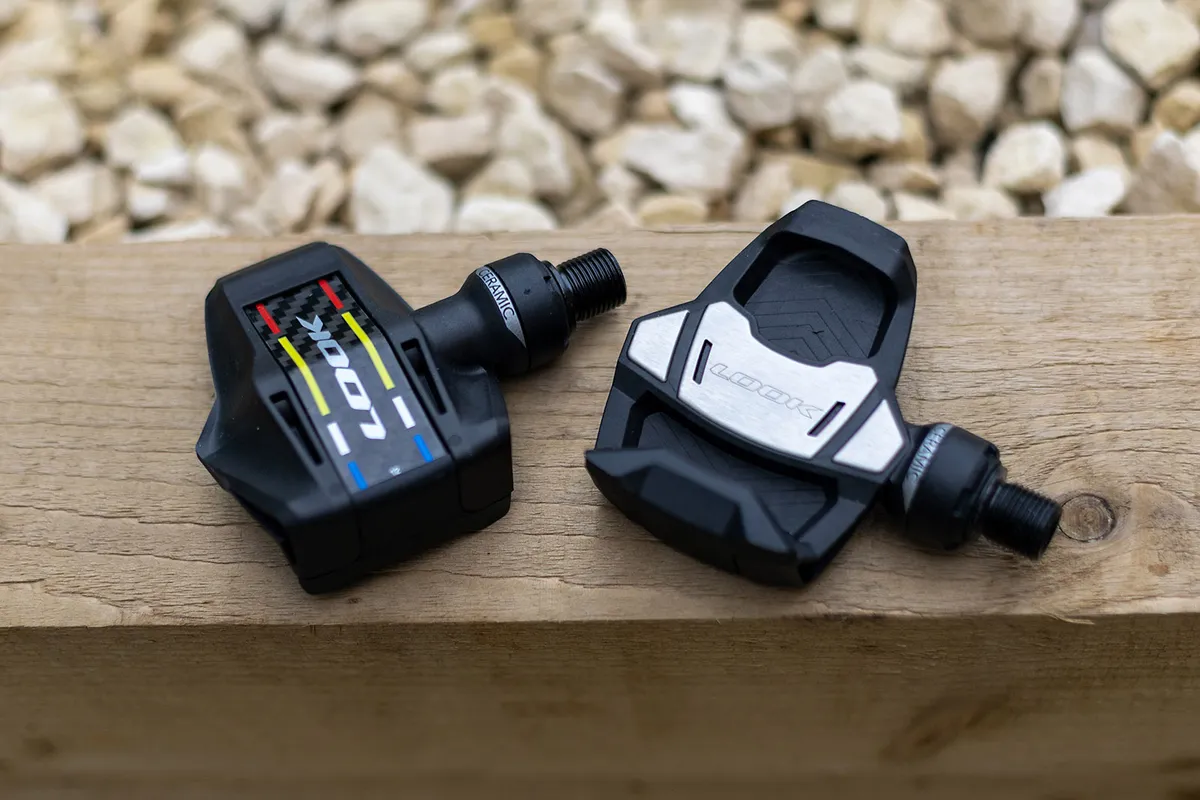
Overall, the Look Keo Blade Ceramic pedal is a slight improvement on the old model.
The design has been tweaked to deliver improved performance in the usual target areas, but in reality the biggest difference to note is the very crisp, positive action of the clipless mechanism.
I’m not sure if it’s enough of an improvement to ‘pull’ riders over from another system, especially if they know their existing system works well for them.
The Shimano Dura-Ace PD-R9100 pedal, for example, is competitive in terms of weight, also has a carbon body, and has durable cleats going for it. It’s also priced similarly, if slightly more expensive.
I don’t recommend current Look Keo Blade users suddenly rush out and ‘upgrade’. However, when the time is right and your current system has worn beyond its useful life, the new system is likely to impress just as much as the old.
Product
| Brand | Look |
| Price | €210.00, £200.00, $252.00 |
| Weight | 232g |
Features
| br_cleatTypepedalSystem | br_Cleat_type |
| Features | Body material: Carbon Spindle: Cromoly+ Tension: 12nm (8nm and 16nm blades also available) |
